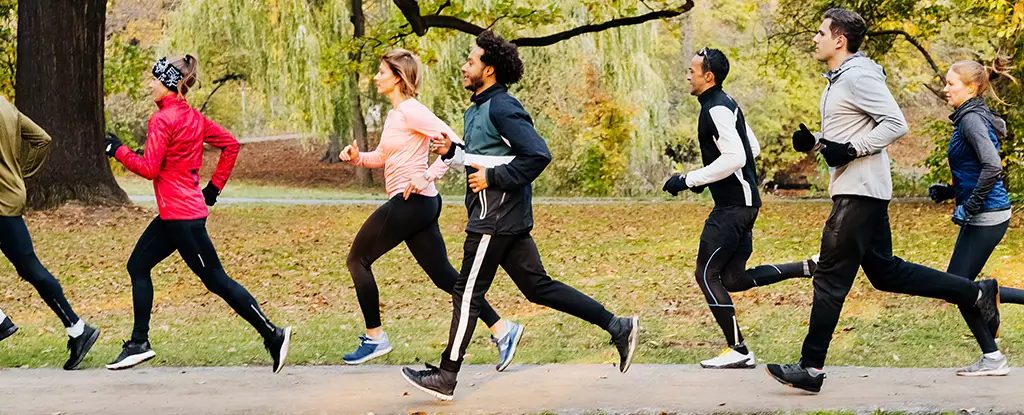One thing that all runners have in common is their obsession with time. Whether they are amateur or professional, runners are constantly striving to improve their pace and get faster. However, there is a growing trend in the running community known as “slow running.” This movement suggests that anyone can run, regardless of their ability or speed. Slow running enthusiasts argue that this approach has numerous benefits, not only for physical health but also for the overall enjoyment of running.
Surprisingly, even elite runners, such as Eliud Kipchoge and Kelvin Kiptum, spend approximately 80% of their training time in what’s called zone 2 running. Zone 2 running involves maintaining a pace that raises your heart rate but still allows you to hold a conversation. Only the remaining 20% of their training is done at higher intensities, closer to their race pace. The reason behind this strategy is simple: as running speed increases, so does the strain on the body. This heightened strain increases the risk of illness, infection, and injury. By minimizing time spent at higher intensities, athletes reduce their chances of missing out on training due to health issues.
To maximize training adaptations, runners need to develop a solid foundation known as “base.” Base refers to the physiological foundations that underpin all training adaptations. Just like a pyramid, the taller the structure, the larger and stronger the base needs to be. Slow, zone 2 running plays a crucial role in developing this base. During this type of running, the heart is not under significant stress, but the amount of oxygenated blood leaving the heart per heartbeat is close to its maximum. Building a strong base allows for more oxygen to be delivered to the working muscles, which is essential for running success.
In addition to building a strong base, slow running has the advantage of using stored fat for energy, as opposed to relying on carbohydrate stores from our food intake. Metabolically, burning fat is a more efficient process, providing a higher energy yield than burning carbohydrates. This means that runners who incorporate slow running into their training use less energy overall, experience less fatigue, and are better able to perform on race day. Studies have demonstrated that athletes who spend more time slow running experience greater gains in VO2 max (oxygen capacity) and race speed compared to those who focus more on high-intensity runs. The aerobic base gains are also approximately five times greater for slow runners.
If you are interested in giving slow running a try, finding the right pace is crucial. Physiologically, zone 2 running occurs below the lactate threshold, which is the point where lactate begins to appear in the blood. To be considered slow running, you should maintain a pace where you can comfortably hold a conversation and your heart rate is around 70% of your maximum. If conversation becomes difficult or you struggle to catch your breath, it is an indication that your pace is too high. You can also try the talk test. If you can sing out loud without struggling for breath, you are in the right zone. Otherwise, you should slow down to avoid the build-up of lactate in your muscles, which can result in a heavy-legged feeling.
Aside from the physical benefits, slow running also has positive effects on mental health. The relaxed pace allows for a more enjoyable and less stressful running experience. It provides an opportunity for runners to appreciate their surroundings, clear their minds, and enjoy the meditative aspects of the sport. Therefore, even if you are not an athlete, choosing to keep most of your runs at a low intensity can still be optimal for your overall well-being.
The slow running movement offers a fresh perspective on the traditional pursuit of speed. By incorporating more slow running into your training routine, you can build a strong base, improve fat-burning efficiency, and enhance your overall running performance. Slow running also allows for a more relaxed, enjoyable, and meditative running experience. So, if you have always been self-conscious about your slow running pace, let this be an inspiration to put on your trainers and give it a try. Remember that taking it easy can often lead to greater success in the long run.



Leave a Reply